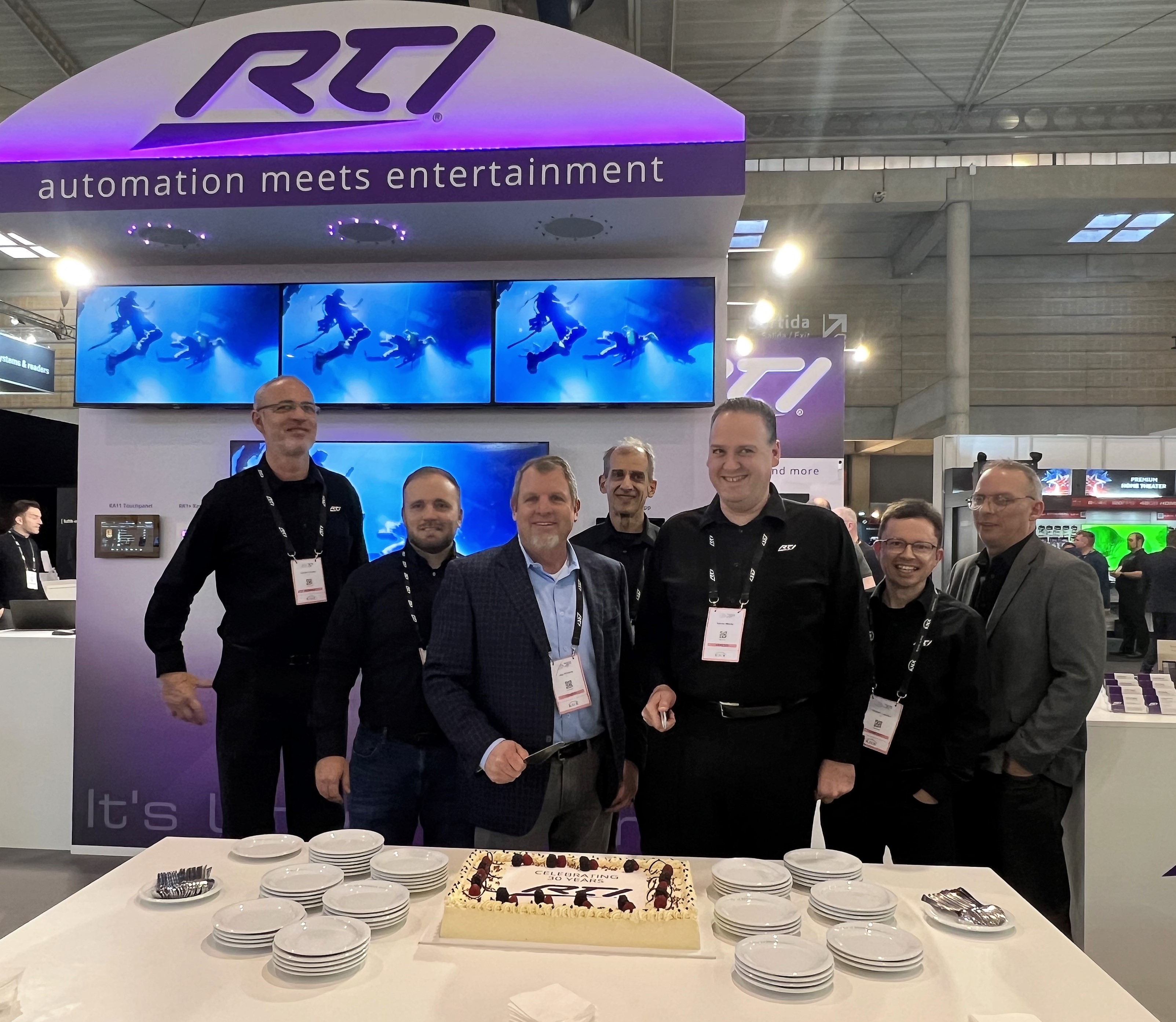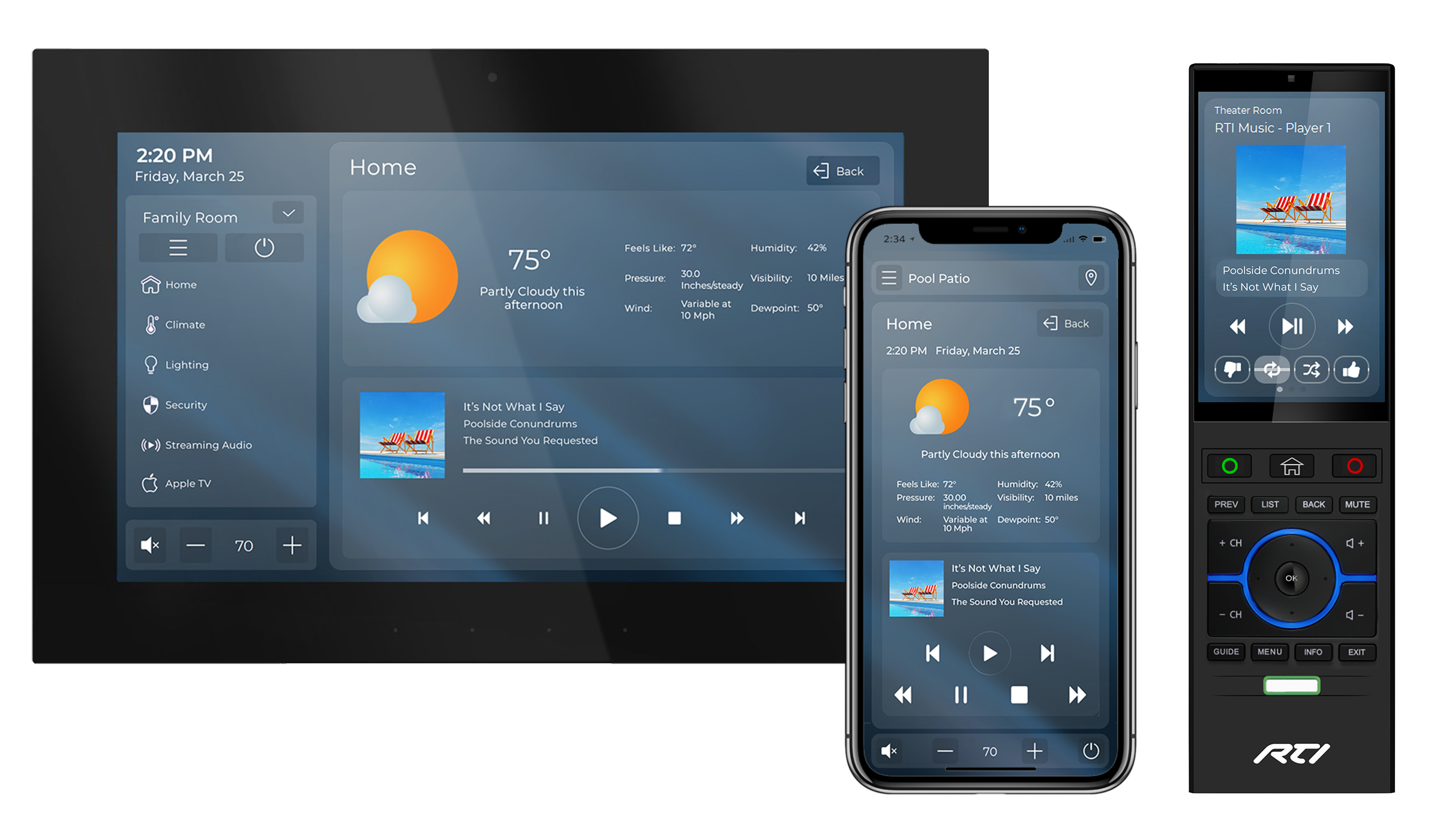SCN: How long have you been with RTI, and what are your responsibilities?
Bill Hensley: I began consulting with RTI in the spring of 2020 and joined full time that August. I am focused on increasing awareness of RTI solutions while building the programs, communications, and tools to help RTI dealers create more opportunities and win more business.
[Executive Q&A: Creating Connections]
SCN: How is RTI celebrating its 30th anniversary?
BH: We’re celebrating by bringing to market the solutions that will pave the way forward for integrators’ businesses to be more profitable and efficient, and that will strengthen customer relationships. This includes control solutions that ensure increasingly functional, intuitive spaces—no matter the environment, user, or equipment. That said, we’ve occasionally paused to share some anniversary cake with our partners.

SCN: What are the short and long-term goals for your company?
BH: RTI is always focused on helping integrators grow their businesses. In the short term, we have some software updates that will add value to every product we make. Ongoing, it’s all about developing exceptional control and AV distribution solutions in both the residential and commercial space.
SCN: RTI is well positioned in both the residential and commercial worlds. When it comes to product innovation, which area tends to lead more?
BH: What we’ve found by looking at the market is that residential dealers are increasingly securing commercial projects where control and automation is desired. Our product innovations, such as creating an ecosystem and portfolio of products that include video-over-IP with native video control inside the control system, reflect this shift. There are a number of ways to meet budgets while exceeding expectations. We work in both commercial and residential; sometimes the spark comes from commercial, sometimes from residential, but we’re seeing more and more overlap.
SCN: What are some of the commonalities between both markets, and are your solutions interchangeable between them?
BH: Take a peek into any conference room or media room and what you’ll see is a plethora of components that all need some sort of operational control, whether it’s lowering a projector screen, adjusting the lighting and shades, or selecting the appropriate source. Our solutions are built around enabling customers to achieve a seamless control experience—no matter the component, no matter the application.
RTI’s mission is to make it easier for dealers to program, connect to, and control any component. That’s why our large and continuously growing library of drivers available for RTI projects is a major focus for the company. New and/or updated drivers release every Friday, which we call "Driver Friday," and that’s just the ones done by our internal team. The network of independent driver developers is always writing drivers for residential and commercial integrations.

SCN: Your Integration Designer software is all about customization. How important is customization for integrators?
BH: Integration Designer is the RTI control application programming platform. It provides a single platform to achieve the full customization for which RTI is renown. The latest version, Integration Designer 11, minimizes programming tasks for the fastest customized installation ever. Integrators can modify the auto-generated pages, create their own custom interface, or even use a third-party template. It delivers the flexibility and efficiency integrators need on projects, while the new Coral user interface provides an intuitive experience in any application. The stunning UI template and auto-generated pages are important for residential integrators, but Integration Designer 11 still enables the full customization that commercial customers demand.
SCN: What was the thinking behind your automation solutions for houses of worship?
BH: Worship is not unlike the conferencing application where control solutions are used to make it easy to start meetings at the touch of a button. Often, it’s the case in the worship space where the AV crew is made up of non-technical volunteers, and there’s lots of sensitive equipment that needs to be powered up in just the right order. Rather than relying on a list of complicated steps, an integrator can program a button on a touchpanel that initiates a macro with the proper sequencing needed for sensitive audio gear.
RTI’s mission is to make it easier for dealers to program, connect to, and control any component.
Our KX4 delivers a simple approach to proper on/off control and room control by combining an in-wall touchpanel and hard-button input with a built-in control processor. So, an integrator could program a sequence macro that would prevent not only the painful feedback of equipment when turned on out of order, but also the damaging inrush that can fry thousands of dollars’ worth of equipment. The KX4 installed at front of house or where it’s most convenient provides both one-button control and the necessary processing power, so volunteers can manage multiple devices with ease.
SCN: Automation for the “smart” office: What are some of the ground rules companies should follow?
BH: Like any project, integrators have to start by listening to the customer. What do they need the room to do right now? At the same time, a wise integrator will ask what companies may want three, five, or more years down the line. This encourages an immediate project that develops into an ongoing relationship. For example, they might want to add more rooms with control. By knowing that now, an integrator can begin to the lay the foundation for that growth by pre-wiring and saving the customer money in the longer term.
[Executive Q&A: New Business Strategies]
SCN: Many instructors are notoriously hesitant toward using technology. How do you get faculty buy-in for control systems?
BH: The beauty of a control system is that it can take learning and worrying about new technology off instructors' plates. After all, they are there to impart wisdom and expertise to students. Again, let’s use the KX4 as the example. An instructor can walk into the lecture hall with, let’s say, a projector or interactive display, camera, speakers, lighting, and more. But they don’t have to worry about all this technology to help them present. All they need to do is push the button on the panel to initiate the presentation mode and achieve optimal lighting, turn on the camera, switch to the right inputs, lower the projection screen, or turn on the display and speakers. Once they do that, they’re set. This can also cut down on help desk tickets and streamline the workflow, so tech staff don’t need to rush around setting up every class.
SCN: How can systems contractors better position themselves to profit from products and/or services you have to offer?
BH: RTI is deeply invested in educating systems contractors. After a break due to the pandemic, we’re restarting our Integration Designer 11 programmer’s certification trainings at RTI headquarters. And understanding that everyone has busy schedules, we have a full curriculum of online courses at our training portal. That way, an integrator can learn on their own schedule.
I’ve already mentioned the ability to customize systems to customer’s needs using our software, but it’s also worth it for integrators to see how efficient it can make the control systems their businesses specify and install. And of course, our product team has worked tirelessly to ensure that our solutions are in stock and ready to ship, allowing installers to better meet project demands and deadlines.

